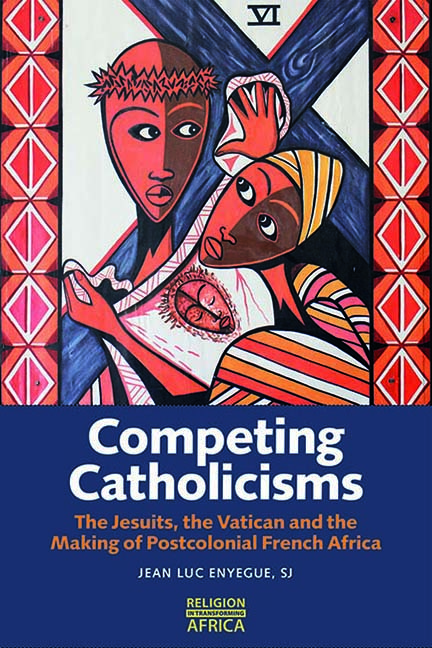Book contents
- Frontmatter
- Dedication
- Contents
- List of Illustrations
- Acknowledgements
- List of Abbreviations
- Glossary
- Chronology of Jesuit Missions in Chad and Cameroon
- Introduction: The End of the Jesuit Mission in Africa?
- Part I The Jesuit Project in West Africa: French Catholicism and Colonialism in Chad, 1935–58
- Part II The Outward Mission: Education and Competing Catholicisms
- Part III The Postcolonial Mission and Catholicity: From Chad to Cameroon, 1962–78
- Conclusion
- Bibliography
- Index
- Previously published titles in the series
- Frontmatter
- Dedication
- Contents
- List of Illustrations
- Acknowledgements
- List of Abbreviations
- Glossary
- Chronology of Jesuit Missions in Chad and Cameroon
- Introduction: The End of the Jesuit Mission in Africa?
- Part I The Jesuit Project in West Africa: French Catholicism and Colonialism in Chad, 1935–58
- Part II The Outward Mission: Education and Competing Catholicisms
- Part III The Postcolonial Mission and Catholicity: From Chad to Cameroon, 1962–78
- Conclusion
- Bibliography
- Index
- Previously published titles in the series
Summary
In the previous chapters, we see how Muslims from the north, as well as increased government intervention and Protestant competition in the south had pushed the Jesuits to change their evangelising methods and to consider new ways to Africanise. This double pressure led the Jesuits to introduce among them ‘new reductions’ where Christian families were trained and sent back to their communities. Christians trained in the Jesuit reductions became evangelisers and social-developers in their respective communities. As a result, the Catholic population grew. New chapels were built by Jesuit Brothers who used agriculture and painting to evangelise. Other evangelising methods included the development of rhetoric, singing catechism and the gospel. They also introduced new teaching techniques more accessible to the students.
Chad's cautious Africanisation approach of the mission was justified and confirmed with Pope Pius XII encyclical Fidei Donum in 1957. On the eve of African independence, the Vatican asked for hundreds of additional European missionaries for Africa as a last chance to save civilisation. The Vatican's appeal for more missionaries was combined with increased clerical Africanisation in neighbouring countries like Cameroon. And in 1962, the two trends had their first encounter in Chad. That year, Jean Zoa, a young Cameroonian archbishop ordained Henri Véniat, a French missionary, as Bishop of Sarh in Chad. With this ordination, the rebirth of missionary Christianity became the new reality in Chad. The challenges of this rebirth of missionary Christianity for the rising African Catholic elite came to life during this ordination.
These three chapters show the way in which Jesuitism operated in Chad and Cameroon after independence, and the increasing integration of the people into the mission and strategy of Catholicism. Tracing the shift in dynamics with independence in the first chapter in this part of the book, the following chapter, Chapter 8, examines the kind of Africanisation the first Cameroonian Jesuits wanted, combining African leadership and nation-building with grassroot evangelism. The radical thinking of the first African Jesuits was perceived as a threat in the Vatican, among their European superiors, as well as European missionaries in Africa. These Africans were sidelined as Europeans regained control of the governance of the new Jesuit jurisdiction in 1973.
- Type
- Chapter
- Information
- Competing CatholicismsThe Jesuits, the Vatican and the Making of Postcolonial French Africa, pp. 175 - 176Publisher: Boydell & BrewerPrint publication year: 2022



